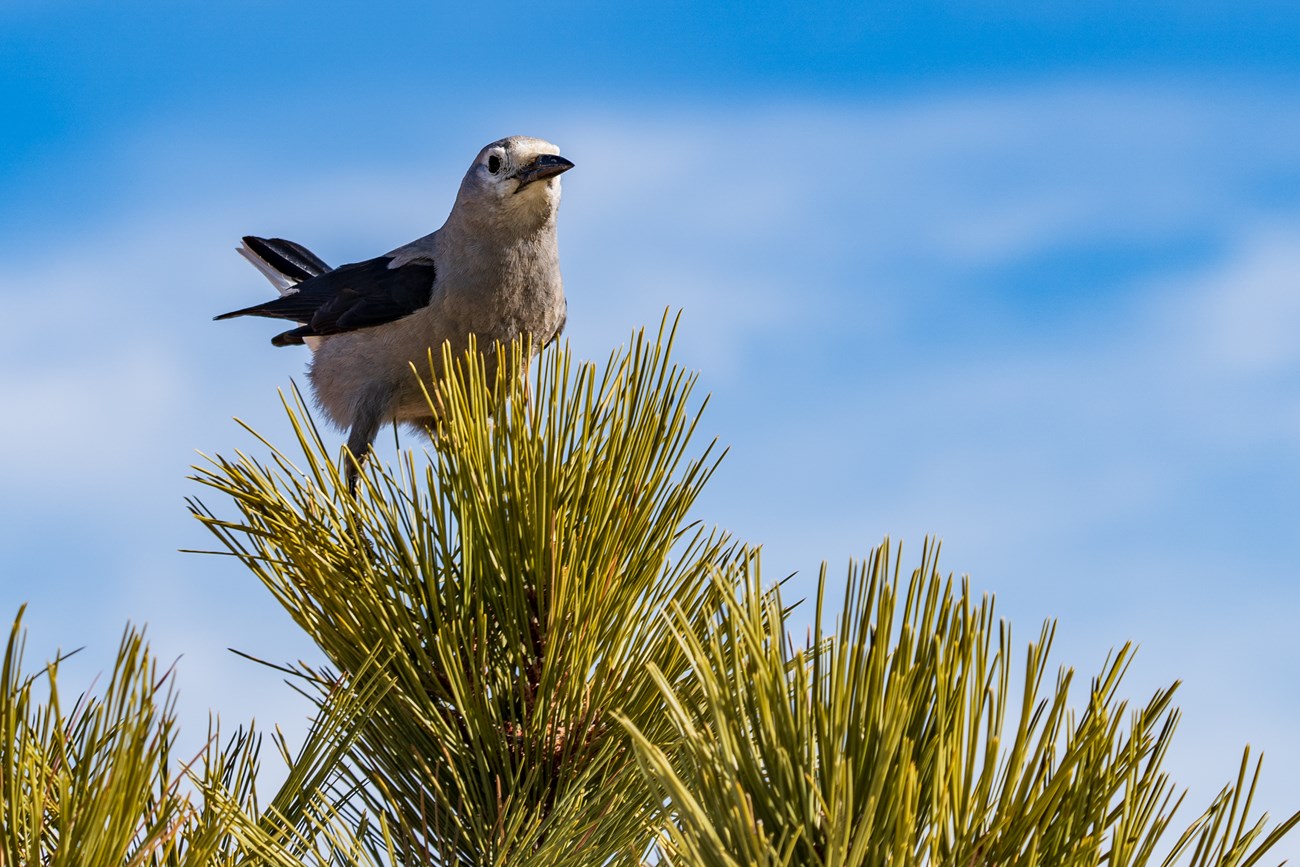
Keith Moore/NPS Nucifraga columbianaWeight: 3.7 – 5.7 oz (106 – 161 g) HabitatClark’s Nutcrackers live in mountain coniferous forests, and are especially dependent on pine trees like whitebark pines, limber pines, and pinyon pines. Although they range in elevation from 3,000 – 12,000 ft (914.4-3657.6 m) they typically live at higher elevations for most of the year and move to lower elevations during the winter months. DietAs their name might suggest, Clark’s Nutcrackers rely heavily on pine nuts, which are particularly large pine seeds that are calorie-rich. Specifically, they prefer pine seeds from whitebark pines, limber pines, and pinyon pines. When the seeds aren’t in season, Clark’s Nutcrackers will also eat berries, insects, eggs from other birds, and even carrion. IdentificationClark’s Nutcrackers are jay-sized birds with long pointed bills and short tails. Overall, they are gray birds with black wings. When flying, however, they have a distinctive tail pattern with white outer feathers and black middle feathers. The edges of the secondary feathers on their wings are also white. Initially they may resemble woodpeckers in flight, but listen for their noisy grating kraak calls as they fly overhead. BehaviorBecause Clark’s Nutcrackers stay in one general area all year instead of migrating, they spend most of the fall collecting and caching pine seeds that they will eat over the winter. They use their dagger-like bills to pry apart pinecones and remove the seeds, which they then store in their sublingual pouch (a special storage pouch underneath their tongue). Even though the pouch itself is relatively small, it is very stretchy – Clark’s Nutcrackers can carry 55 pinyon pine nuts in their pouch at one time! ConservationClark’s Nutcrackers are fairly common in their forest habitats, with stable populations. One important thing to consider about this species, though, is that the Clark’s Nutcracker is incredibly important in the maintenance of the pine forests they live in. Despite its superb memory, a Clark’s Nutcracker will never use all the seeds it caches before it starts to forget the locations. The forgotten seeds then go on to become the next generation of pine trees. Whitebark pines, limber pines, and pinyon pines are all as dependent on the Clark’s Nutcracker as the Clark’s Nutcracker is on them. When and Where to See at BryceDuring the fall, Clark’s Nutcrackers can often be found around Rainbow Point and the Bristlecone Loop, collecting the limber pine seeds they will cache for the winter. Sometimes they can be found in this area into the early winter, but more often they move to lower elevations in the park until warmer weather comes in the spring. |
Last updated: February 17, 2021
